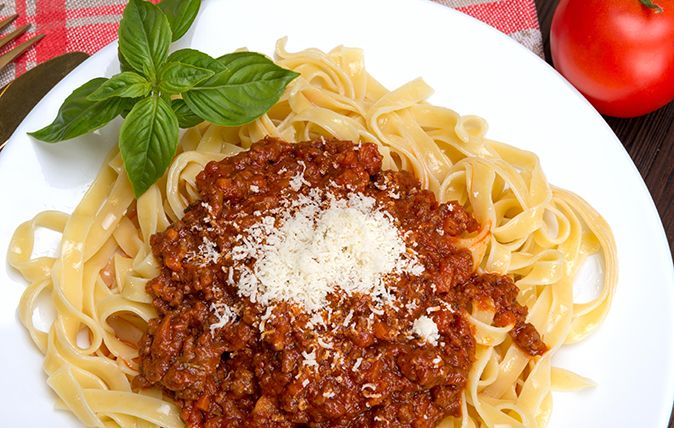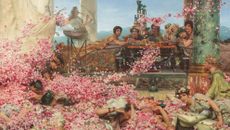Greatest recipes ever: Anna Del Conte’s ragù bolognese sauce
Tom Parker Bowles chooses Anna Del Conte’s ragù bolognese sauce as one of his greatest recipes ever.


‘Anna is the queen of Italian cookery, and this is as far removed from the ghastly spag bol (made with cheap mince, burnt onions and ketchup) as it can be. This is a slow-cooked classic.' Tom Parker Bowles
Anna Del Conte’s ragù bolognese sauce (makes enough for six helpings of pasta)
Ragù is the perfect example of Bolognese cooking: rich yet well balanced, lavish yet restrained, meaty yet fresh-tasting. There are hundreds of versions of ragù, but the classic one, the one that everybody identifies with its place of origin, is the bolognese.
Nowadays, ragù is out of fashion-too rich, unhealthy, bad for the heart, bad for everything, but certainly not bad for the palate. This recipe is not too rich, I think. It follows closely the precepts of a classic ragù, but is lighter on fat. Remember that it is important to chop the vegetables finely, so that they are the size of grains of rice.
Ingredients
60g/2oz butter 2tbsp extra virgin olive oil 60g/2oz unsmoked pancetta, finely chopped 1 small onion, finely chopped 1 carrot, finely chopped 1 celery stalk, finely chopped 1 garlic clove, finely chopped 1 bay leaf 400g/14oz lean chuck or braising beef, coarsely minced 2tbsp concentrated tomato paste 150ml/5fl oz red wine, such as a Sangiovese or a Barbera 2 pinches of grated nutmeg Salt and freshly ground pepper 150ml/5fl oz meat stock 150ml/5fl oz full fat milk
Method
Heat the butter and oil in a heavy-based saucepan and cook the pancetta for 5 minutes, stirring frequently. Add the onion, and when it has begun to soften, add the carrot, celery, garlic and bay leaf. Cook for a further 10 minutes, stirring frequently.
Put in the minced beef and cook until it is medium brown in colour and nearly crisp, crumbling it in the pot with a fork. Do this over a high heat so that the meat browns rather than stews, but be careful not to let the mince become too brown and hard.
Add the tomato paste and continue to cook over a high heat fr a further 2 minutes. Still over a high heat, add the wine, nutmeg, salt and pepper and the stock.
Sign up for the Country Life Newsletter
Exquisite houses, the beauty of Nature, and how to get the most from your life, straight to your inbox.
Bring to the boil, then turn the heat down to very low, so that the mixture will reduce very slowly.
Set the lid askew over the pan and cook for about 2 hours, adding a couple of tablespoons of milk from time to time.By the end of this time all the milk should have been added and absorbed, and the ragù should be rich and thick, like a thick soup.
Taste and adjust the seasoning. The ragù is now ready to dress a dish of homemade tagliatelle, thus producing one of the greatest dishes of Emilia.
Extract from Anna Del Conte's The Classic Food of Northern Italy Published by Pavilion Books
Country Life is unlike any other magazine: the only glossy weekly on the newsstand and the only magazine that has been guest-edited by HRH The King not once, but twice. It is a celebration of modern rural life and all its diverse joys and pleasures — that was first published in Queen Victoria's Diamond Jubilee year. Our eclectic mixture of witty and informative content — from the most up-to-date property news and commentary and a coveted glimpse inside some of the UK's best houses and gardens, to gardening, the arts and interior design, written by experts in their field — still cannot be found in print or online, anywhere else.
-
 How many puppies in the average litter? Country Life Quiz of the Day
How many puppies in the average litter? Country Life Quiz of the DayPlus a 1960s house, Hollywood's most famous cavewoman and more in Friday's quiz.
By Toby Keel Published
-
 Love, sex and death: Our near-universal obsession with the rose
Love, sex and death: Our near-universal obsession with the roseNo flower is more entwined with myth, religion, politics and the human form than the humble rose — and now there's a new coffee table book celebrating them in all of their glory.
By Amy de la Haye Last updated
